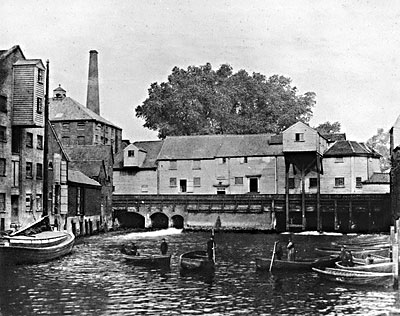 |
|
c.1890
|
|
New Mills
River Wensum |
 |
|
c.1890
|
|
In the 12th century Hauteyn gave two mills under one roof to Heigham. They were called Westwick Appleyard and Bumpstede, one was owned by the Abbot of St. Benet's and the other by the Prior of Norwich. They were built on a cut in the river known as Soke Dyke, west of what later became the City Station, which was effectively built on an island in the river. Frontage to this cut, known as the Old River was mentioned in the sale documents of Heigham Bark Smockmill that worked in the tannery alongside the river. The cut was later filled in, the northern sectioon when the City Station was built and the southern section later, when the roundabout was built. Another pair of mills were called Caulke Mills and they were sited on another cut opposite Appleyard and Bumpstede mills. Blomefield's 1808 History of Norfolk states that Caulke Mills were in existence at the time of the Norman Conquest. A lane called Water Lane leads off the west side of St Martin's Street and on down to the river. The lane used to be called Mill Lane and it originally led to the Caulke Mills. The centre cut was left clear. There was probably
also a mill near the Dolphin footbridge and another close to the Gibralter
Gardens pub. |
|
The chimney on the left of the above photo was attached to the boiler house that supplied additional power to the corn and silk mills via a steam engine. |
|
The building
of New Mills was funded by the mayor and other wealthy citizens such
as Robert Baxter in 1430, on the site of even more ancient mills at
a cost of £211 5s 7d. The bequest of a coronet to Norwich by the
late King Henry V provided 200 marks towards the costs. The actual builders
or carpenters
were William Cok and John Arnold, who were paid 100 marks. At this time,
in the reign of Henry Vl, the city of Norwich had been without corn
mills for some 12 years. New Mills was set up to evade the costly milling
that was provided by the Abbot of St. Benet's in the Home. |
|
Formerly all the city bakers were obliged to grind here and the
miller, as a public servant, had a livery and badge given to him every
year. The mills are still the property of the city (1869) and in 1706
were let, with the bakers' grant hereto, for a term of 87 years, at
the yearly rent of £200, but reduced in 1798 to £180. The
mills are now let to Mr. Wells and produce a large quantity of flour
weekly. |
|
Yesterday Morning early John_Wooton, millwright, aged 66, belonging to the Water-works at the
New Mills hanged himself. - And the same Day Jos._Hutchin, Millwright, in St. Augustine's aged 63, drowned himself
in the river near Heigham. - The Coroner's Inquest found the both Non
Compos Mentis. |
Thomas Kett twice married Gurneys, neither of whom were daughters of Bartlett Gurney, (joint proprietor) who although also twice married, died sin prole on 24th February 1803. Thomas' first marriage was to Lucy Gurney, daughter of John Gurney and Anne Kendall on 29th July 1776, at Norwich. Lucy was a first cousin of Bartlett and died on 4th December 1776. The second marriage at Norwich, on 2nd May 1780, was to Hannah Gurney, daughter of Samuel Gurney and Sally Lawrence. Hannah was a second cousin of Bartlett Gurney. Both women were cousins of Elizabeth Fry (née Gurney) the Quaker prison reformer. Lucy being a 2nd cousin 1x removed and Hannah being a 1st. cousin 1x removed. |
Bur-Stones, etc. |
Just imported, a Cargo of French Bur-Stones and Plaister, of exceeding good Quality, to be sold very cheap for ready Money, by applying to Thomas Craske, at the Sign of the New-Mills, Norwich.
Norfolk Chronicle - 8th March 1783 |
A correspondent is of opinion, that if the Court of Guardians for the
poor of this city were to contract for the flour and meal at the New Mills,
(the delivery to the bakers, being then made under certain regulations)
instead of paying 3d per comb commission for buying corn in the
market, and so much for grinding it at several wind-mills, there would
be a saving of between two and three hundred pounds yearly. |
On Saturday last Obadiah Oaksford and Jonathan Goss, were
committed to the city gaol, by John Gay, Esq., charged with stealing
a quantity of iron bolts from the New Mills, in this city, the property of
the proprietors. |
In
1441, eleven years after New Mills was built, John the Abbot of St. Benet's
in the Holm, encouraged by ex Mayor Thomas Wetherby, Alderman of the Connisford
ward, decided to raise an objection to the New Mills, the dispute being
known as Wetherby's Contention.
This eventually ended in a riot known as Gladman's
Insurrection on
10th March 1442
that caused the destruction of the 4 old mills just upstream. After several
years of neglect, the mills on the present site were restored and utilised
as a means of water supply. In 1710 the mills were rebuilt, 60% of the
flow being harnessed for grinding corn and the remainder for pumping water.
By the 1780s New Mills was involved in 3 separate enterprises under the
same roof - milling flour, milling wood and pumping water. The wood mill
appears to have been used solely for rasping woods such as redwood, fustick
and peachwood for use by dyers. In the late 1800s the adjoining silk mill
had use of one of the wheels, having presumably taken over from the wood
mill. During its history the complex housed flour mills, a fulling mill, a saw mill, a silk mill and the City waterworks. For the majority of the time two waterwheels were in use at opposite ends of the mill main structure, powering a variety of processes. In 1836 the waterwheel working the seven water pumps was 15 feet wide and 18 feet in diameter. Besides the Corn Mills, here are mills for fulling cloth and cutting logwood, and also the waterworks for supplying the city with water, which is raised by an engine constructed with great ingenuity and experience by the proprietors, and by which the water is carried to the reservoir in Chappel-field, from whence the highest parts of the city are plentifully supplied... Browne's History of Norwich - 1814 |
|
The oldest sketch or painting of New Mills was the 1541 Sanctuary Map of Norwich, in John Kirkpatrick's The Streets and Lanes of the City of Norwich. New Mills was depicted as long white timbered building with a reddish roof built across the river just upstream of Coslany Bridge |
|
The Waterworks on the River Wensum, by which the
City is amply supplied with the pure beverage of nature are the property
of the corporation, but are let on lease together with the NEW MILLS
-- the lessees being bound to supply the inhabitants according to a
table of charges fixed by the corporation a committee of whom is appointed
yearly, to inspect the works and control the lessees. The New Mills
were first built by the city, in 1430 and for several centuries all
the City bakers were obliged to grind their corn there, but the Abbott
of St. Benet's at Holm considered his property injured by these mills,
persecuted the city and the dispute ended in a riot in 1441, when the
flood gates were pulled up and destroyed. The New Mills and waterworks
were rebuilt in 1710. Water was conveyed from thence in the reign of
Elizabeth to the Guildhall and the Cross in the Market Place but the
general supply of the inhabitants was not attempted until 1697. The
works were greatly improved and extended between the years 1790 and
1800. The water is not taken immediately at the mill dam as that is
apt to be turbid, but is brought in a trunk or canal from Fuller's Hole,
above the dye houses nearly a quarter of a mile from the mills. |
|
Sanitary
conditions in the city were dire by 1850. Government Inspector William
Lee wrote of the Chapelfield Reservoir ...there
were bubbles of gas seen rising in the reservoir, and the water became
a dark colour when a supply was let in by the pipes. Also
in Hindes Yard slugs were drawn in the water. |
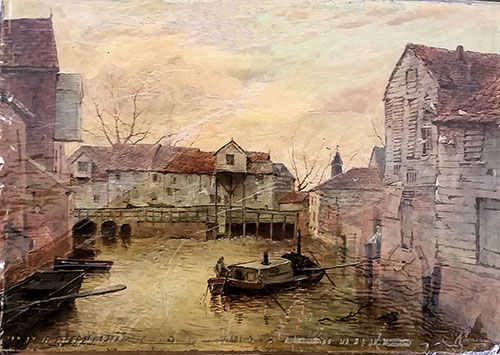 |
|
Painting by William Cooke c.1895
|
|
In 1493 wheat cost 6d a bushel |
|
Only enough water for the engines today. Drawd it
down quite low tonight for Mr. Dawson to depthen his bathing decks.
Witham (lived
at the mills) should have shut down the gates at one this
morning... but it was near five and then I was forced to call him so
we could draw off the engines til near nine o'clock and then could hardly
get water for them all day. |
|
Flooded today. Drawed all the gates. Flour mill not working. Geers repaired. New gudgeons fitted to the flour dressing shaft. |
A correspondent is of onion, that if the Court of Guardians for the poor of this city were to contract for the flour and meal at the New Mills, (the delivery to the bakers, being then made under certain regulations) instead of paying 3d per comb commission for buying corn in the market, and so much for grinding it at several wind-mills, there would be a saving of between two and three hundred pounds yearly. |
|
In 1786 William Youell reported that William Fox went into the country to look for bent oak for the wood mill. Later he bought bent oak from Carrow Abbey. The wood mill made less profit than the flour mill but was not subject to the same sharp fluctations. The corn mill suffered from the problems of millilot and must. The water works provided the most steady source of profit. |
|
In the winter people skated with shinbones of animals lashed to their feet, probably on the frozen ozier grounds and marshes on the meadows next to the mills. Youths propelled themselves about the ice with iron shod poles. |
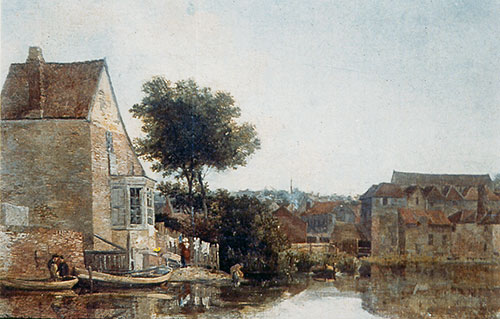 |
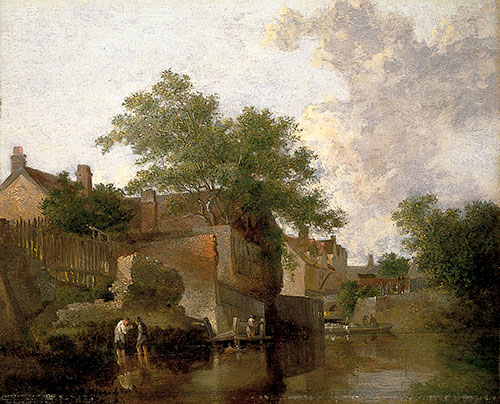 |
|
Front
of New Mills by John Crome - 1813
|
|
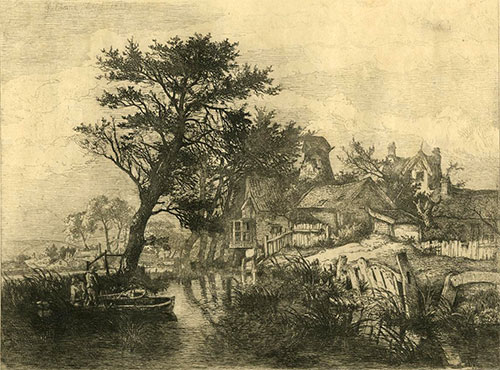 |
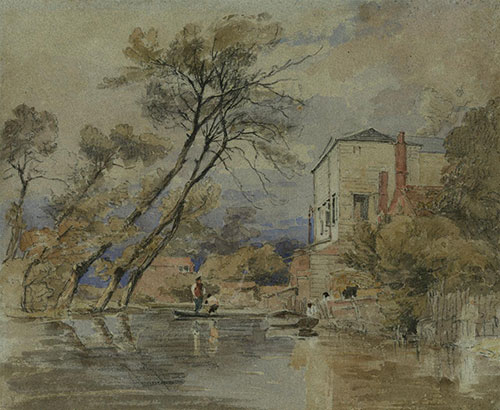 |
Back of New Mills by John Crome - c.1790 |
Back of New Mills by John Crome - c.1815 |
| Corn Mill & Waterworks Tenders sought for erecting new water corn mill. Norfolk Chronicle - 1st October 1791 |
William Harrison Wells was born on 24th September 1805, the son of William and Sarah Wells. William Wells snr, who was born c.1781 in Lound, Suffolk, married Sarah Harrison in Gt Yarmouth on 29th January 1804. William snr was almost certainly a miller by profession but it's not known where. He died at some time between the census in 1841 and 1851 and the 1851 census lists Sarah Wells as the widow of a miller. William jnr was given his mother's maiden name as a middle name and obviously learnt milling at an early age. He married Harriet Howes at West Somerton on 9th May 1832. |
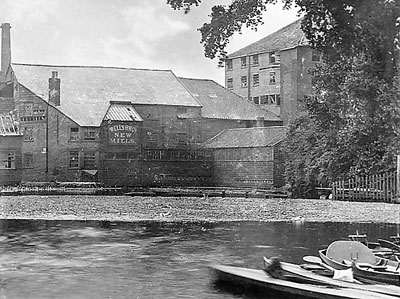 |
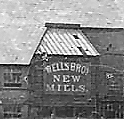 |
||
Mill dam c.1888 |
Wells Bros sign |
||
|
CITY OF NORWICH WATERWORKS COMPANY
WELLS BROTHERS RENT PAYMENT - NEW MILLS |
|
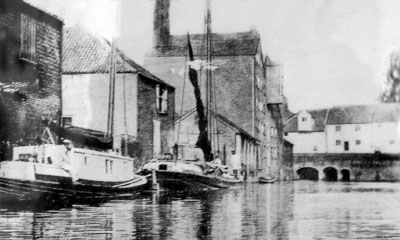 |
c.1896 - Sharpin & Sons |
In 1896 Sharpin & Sons were running the mills. The wherries are moored beside a builders' merchant's warehouse and a corn merchant's warehouse with the lucum is beyond that. |
|
In 1897 the original weathboarded mill was completely dismantled and New
Mills were rebuilt again by the Norwich Corporation to be used as part
of the City sewerage system. The mill became an air compressing station
that worked eight automatic sewage ejector stations. There were five air
compressors, three of which were permanently powered by electric motors,
the remaining two being normally driven by turbines worked by the river
with a total of 100bhp. |
After the orignal weathboarded mill was dismantled in 1897, a rail link was installed to connect M&GN's Norwich City Station to both the tidal river wherries and Norwich City Corporation's Westwick Depot. |
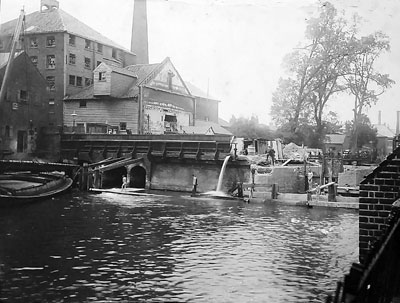 |
Mill being dismantled 2nd July 1897 |
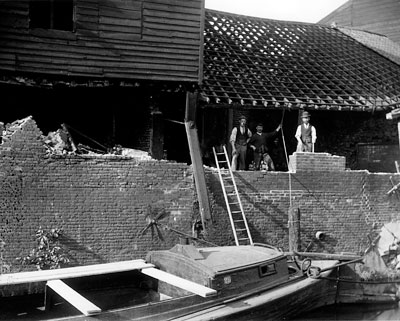 |
Mill being dismantled in 1897 |
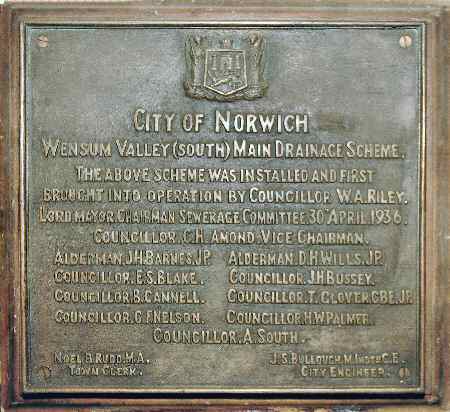 |
|
Plaque c.1925
|
|
The original
purpose of New Mills air compressor station was to produce compressed
air for moving sewage. This was achieved by holding sewage in 500 gallon
tanks called 'Shone Stations.' Inside these tanks were bell floats that
lifted as sewage entered and compressed air from New Mills was then injected
at 30psi to force the sewage to a higher point that enabled it to free
run out to the Trowse works. The two Shone Ejector pumps were the last
working in the country apart from the pair under the Houses of Parliament. |
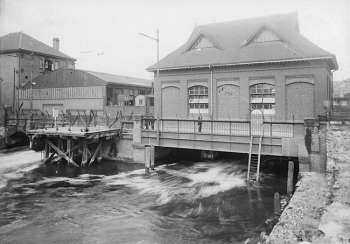 |
|
c.1925
|
|
In the 1990s
over £20,000 was ploughed into the restoration of the New Mills
pumping station in a bid to turn it into a tourist attraction. But it
appears the project closed, as the Friends of New Mills Group, which had
been working with YMCA Services Ltd. to raise £50,000 was wound
up. |
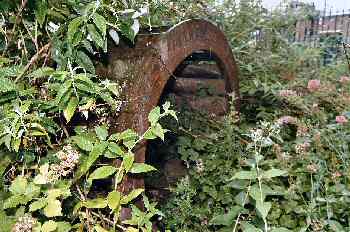 |
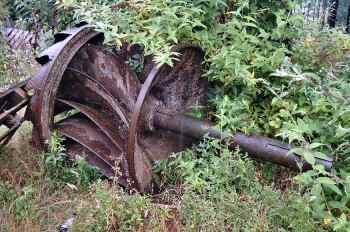 |
||
|
Waterwheel
30th June 2003
|
Turbine
30th June 2003
|
||
| George Sorocold of Derby, who took over the mill in partnership with Richard Barry in 1694, was an eminent water engineer. He was also involved with waterworks in Gt. Yarmouth, Portsmouth and Leeds. |
|
On 10th October
1793 |
Alderman
John Toly and Robert Howne (?) took on a 5 year lease from Michaelmas 1635
at £180 per annum, including the three water mills used for the grist of corn within the said city of Norwich called the New Mills and one water mill called the Fulling mill and the Mill house to the same belonging with the house called the Conduit House to be used and occupied as a Mill House... |
| October
1656: Goodman Wright, the miller
caught a 3½ foot salmon in the Wensum at New Mills 28th October 1816: 57" salmon weighing 16½ lbs 31st October 1816: 26 lb salmon 5th November 1817: 40" salmon trout weighing 21 lbs 16th October 1840: Brace in eel net. Female 6½ lbs, male 4¾ lbs 24th November 1846: 9½ lb trout 15th January 1869: 15lb trout in drop net |
| On Friday morning as Mr James Douglas, brick-layer was
near the New Mills in a boat, he lost his purchase in attempting to near
the side of the river, fell overboard, and was drowned. Norwich Mercury - 8th December 1821 |
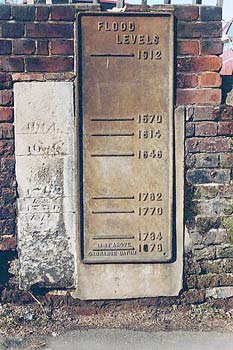 |
Plaque showing flood levels |
| William Harrison Wells & Wells Bros also worked the tower mill at Crook's Place, Norwich. |
|
William Harrison
Wells was formerly at Dilham mill and was a
friend of Edmund Girling jnr (1796-1871), who along with William Stannard
jnr, ran a London corn and flour merchant company trading under the name
of Girling & Stannard. They operated from Jack's Coffee House in Mark
Lane, London. |
Potter Batson was the miller at Mile_Cross_postmill from 1868 to 1872. He was born c.1825 in Hellesdon and in 1861 was given as living in Aylsham Road with his parents. It appears that Potter Batson left Mile_Cross at Michaelmas 1872, and went to work for W. H. Wells at New Mills, where his career there ended abruptly. |
Miscellaneous |
POLICE INTELLIGENCE. |
Before the MAYOR, (R. Chamberlin, Esq.), W. J. UTTEN BROWNE, F. E. WATSON, E. K. HARVEY, and J. M. VENNING, Esqs., and Dr. BATEMAN. Potter Batson, miller, of Lower Westwick-street, Heigham, was charged with stealing a bag containing 3st. 6oz. of flour, value 10s., the property of Messrs. Wells. – Mr. Sparrow prosecuted; Mr. Linay defended. – Detectives Mason and Wigley were upon the premises of Messrs. Wells on Wednesday evening. They were posted in a stable opposite the entrance of the mill, when they saw Batson come out of the mill, walk round the yard, pass the stable door where the officers were standing, and look out into the river. he returned into the mill, and came out again almost directly afterwards, bringing with him a sack containing something, which he placed by the side of a hay-stack, opposite which the officers were standing, and then returned to the mill. When he came out again, he went to the waterside, where he remained a few minutes; after which he went and took up the sack, and came into the stable where the detectives were. Mason caught hold of him, and asked him what it was he had upon his shoulder, and received a reply that it was some feed for his horse. Mason asked him whether he was the horseman, and he replied in the negative. The officer then took him into custody, and charged him with stealing the bag and its contents. The bag was subsequently examined, and found to contain 3st. 6oz of flour. – On the application of Mr. Sparrow the case was remanded till Monday next. Norfolk Chronicle - 2nd November 1872 |
POLICE INTELLIGENCE. |
| Before R. CHAMBERLIN (MAYOR), E. K. HARVEY, W. J. UTTEN BROWNE AND J. M. VENNING, Esqs. Potter Batson, miller, Albert-street, Heigham, was brought up on remand on the charge of stealing a quantity of flour, the property of his employers, Messrs. Wells of the New Mills. – Mr. Brown (from the office of Messrs. Emerson and Sparrow) appeared for the prosecution; and Mr. Linay defended. – Detective Wigley having given evidence as to himself and Detective Mason apprehending the prisoner in the act of taking away the flour, Mr. Julian Wells was called and deposed to the prisoner not having any right to take the property away. – Prisoner now pleaded guilty, and Mr. Wells having recommended him to mercy at the solicitation of Mr. Linay, he was sentenced to only two months’ hard labour. Norfolk Chronicle - 9th November 1872 |
Wells Brothers were listed in Hamilton’s Directory of 1879 as millers at New Mills and the towermill at Crook’s_Place. John Robert Wells, born c.1835 and Frederick Rising Wells, born c.1850 were both sons of William Harrinson Wells and were born while the family were living in Dilham. In 1881, Frederick Rising Wells was given as a miller and corn merchant living at 5, Heigham Road, Heigham with his wife Ellen R., (31), son Frederick G. R. (8) and daughter Lillian (7). Wells Brothers were listed in Eyre’s Directory of 1883 as millers in Essex Street and New Mills Yard. The Wells Brothers' partnership was dissolved on December 1884. |
NOTICE is hereby given, that the Partnership lately subsisting between us, the undersigned, JOHN ROBERT WELLS, JULIAN TREVANIUM WELLS, FREDERICK RISING WELLS and KATHARINE HICKS WELLS, carrying on business as Millers at the New Mills and Crook’s Place, in the City of Norwich, under the style or firm of “WELLS BROTHERS,” has this day been dissolved by mutual consent so far as regards the said Julian Trevanium Wells, who retired from the firm. All debts sue to or owing by the said late firm will be received and paid by the said John Robert Wells, Frederick Rising Wells and and Katharine Hicks Wells, who will continue the said business under the style or firm of “WELLS BROTHERS.” |
Wells Brothers were listed in Hamilton’s Directory of 1879 as millers at New Mills and the Tower Mill, Crook’s Place. John Robert Wells, born c.1835 and Frederick Rising Wells, born c.1850 were both sons of William Harrinson Wells and were born while the family were living in Dilham. In 1881, Frederick Rising Wells was given as a miller and corn merchant living at 5, Heigham Road, Heigham with his wife Ellen R., (31), son Frederick G. R. (8) and daughter Lillian (7). Wells Brothers were listed in Eyre’s Directory of 1883 as millers in Essex Street and New Mills Yard. The towermill was marked on the 1884 map. The Wells Brothers' partnership was dissolved on December 1884. |
NOTICE is hereby given, that the Partnership lately subsisting between us, the undersigned, JOHN ROBERT WELLS, FREDERICK RISING WELLS and KATHARINE HICKS WELLS, carrying on business as Millers at the New Mills and Crook’s_Place, in the City of Norwich, under the style or firm of “Wells Brothers,” has this day been dissolved by mutual consent so far as regards the said Frederick Rising Wells, who retires from the firm. All debts sue to or owing by the said late firm will be received and paid by the said John Robert Wells and Katharine Hicks Wells, who will continue the said business under the style or firm of “Wells Brothers.” |
Wells Brothers were listed in White’s Directory of 1887 as corn merchants and millers, New Mills Bridge and Crook’s Place mills. The brothers were individually listed as follows: - Frederick Wells, home Heigham Road; John Wells, home New Mills, Lower Westwick Street; John Robert Wells, home South Heigham; Julian Wells, home New Mills, Lower Westwick Street. Julian Trivanion Wells was born c.1840 in Dilham, Norfolk and in 1881 was given as living in Lower Westwick Street, St. Swithin with his brother Raymond A. Wells. |
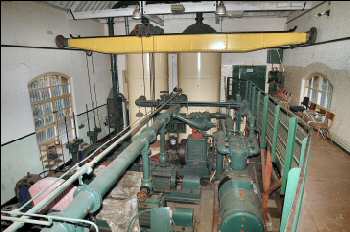 |
|
New
Mills interior 30th June 2003
|
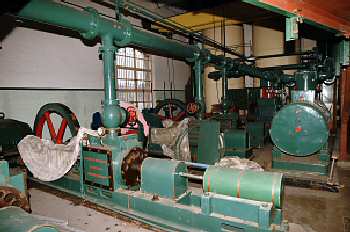 |
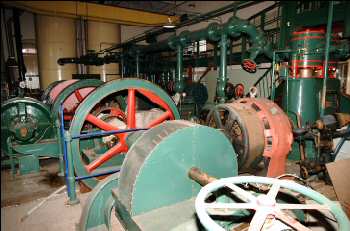 |
|
Compressor
and pumping machinery 30th June 2003
|
|
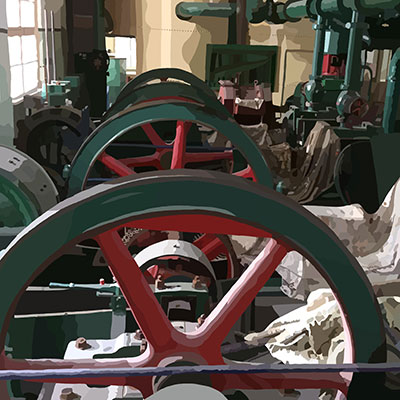 |
|
Painting by Ken Hurst © 2018
|
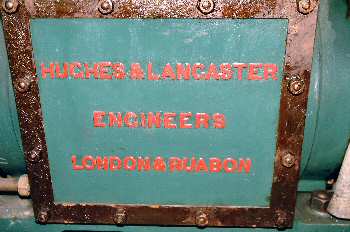 |
|
Machinery manufacturer's plate 30th June 2003 |
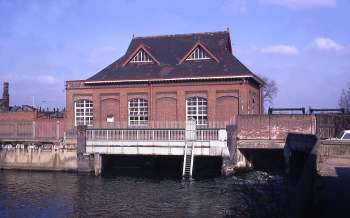 |
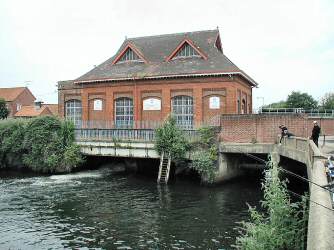 |
|
April
1969
|
22nd
June 2003
|
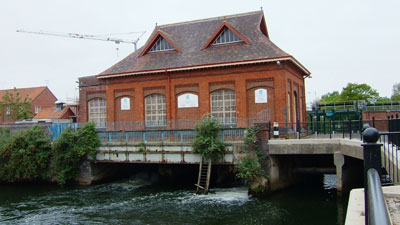 |
5th May 2007 |
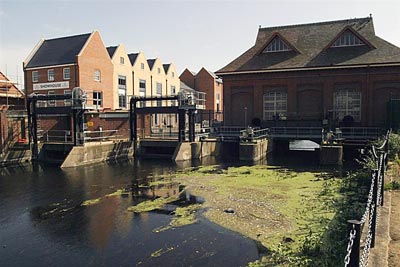 |
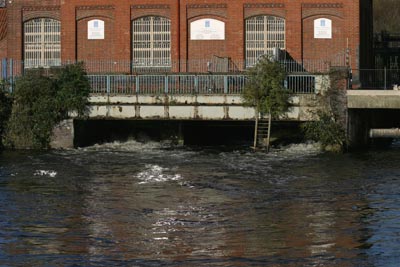 |
Mill dam 2007 |
Wheelrace 2007 |
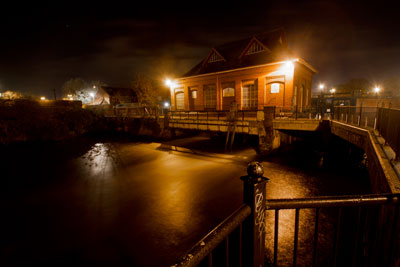 |
22nd November 2013 |
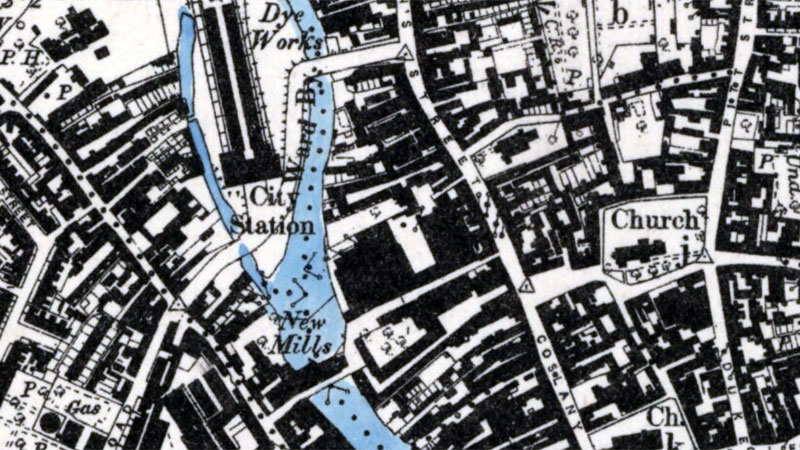 |
O. S. Map 1883 |
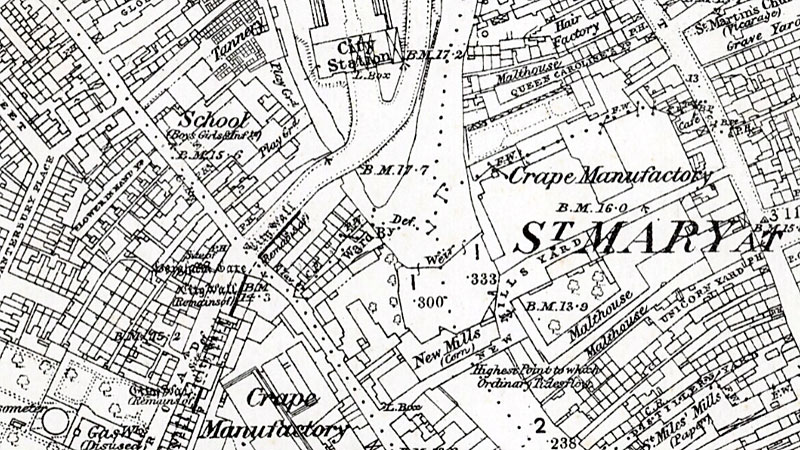 |
O. S. Map 1884 |
 |
O. S. Map 1905 |
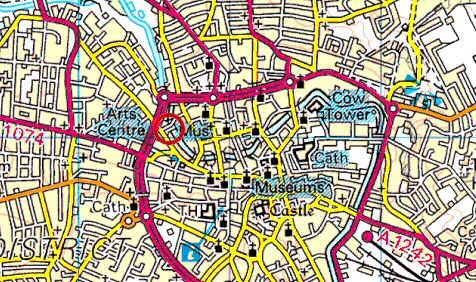 |
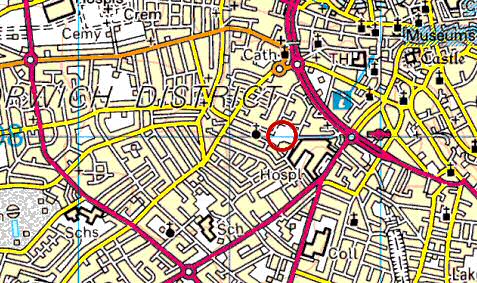 |
|
O.S. Map 2005 Image reproduced under licence from Ordnance Survey |
O.S. Map 2005 Image reproduced under licence from Ordnance Survey |
1391: Simon Everard |
If you have any memories, anecdotes or photos please let us know and we may be able to use them to update the site. By all means telephone 07836 675369 or
|
| Nat Grid Ref TG22610905 | Copyright © Jonathan Neville 2003 |